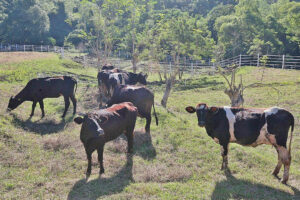By Adrian H. Halili, Reporter
THE Philippine Chamber of Agriculture and Food, Inc. (PCAF) said it supports efforts to expand the dairy cattle herd via imports, and cited the need to build up the industry’s capabilities in artificial insemination.
PCAF President Danilo V. Fausto said: “I hope we can import more dairy animals to increase our herd and also build up our artificial insemination (AI) program,” he said by telephone.
Mr. Fausto added that the government should also increase the number of AI technicians and capacitate them through incentives.
The National Dairy Authority (NDA) has said that it plans to import dairy cattle for its stock farms. The acclimated offspring of these cattle will then be distributed to dairy farmers.
The Philippines imports the majority of its dairy requirements as domestic production cannot meet demand.
“With those measures, little by little, we hope to increase the share of our production versus the national demand,” Mr. Fausto said.
The NDA is targeting a sufficiency level of 2.66% by 2025. As of June, milk sufficiency was 1.54%.
In a report, the US Department of Agriculture said that Philippine dairy imports are expected to rise to 3.1 million metric tons (MT) in liquid milk equivalent in 2025, amid an expected increase in domestic dairy production to 30,000 MT.
Additionally, Mr. Fausto said that the passage of the Philippine Livestock Industry Development Act could further provide the catalyst to grow the dairy industry.
“(The taxes collected) from the imports of dairy products will be rechanneled directly to the development of the dairy industry,” Mr. Fausto said.
He added that the proposed law would centralize the management of the dairy industry.
“It could also increase the regulatory function of the (NDA),” he said.
The Senate has approved Senate Bill 2558 on third and final reading. It does not yet have a counterpart measure in the House of Representatives.
The NDA aims to increase dairy production to 80 million liters per year by 2028 to increase the share of domestic production to about 5% of dairy demand.

